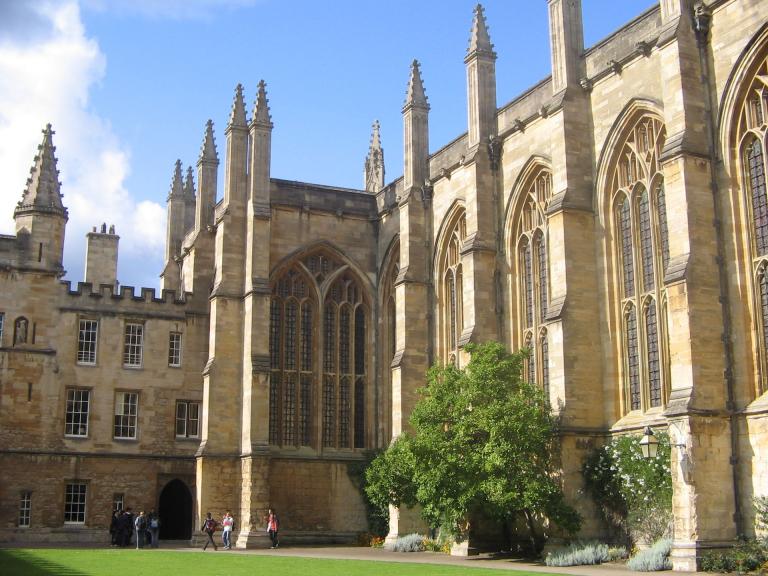
In 1988, only a year or so prior to his death, Sir A. J. Ayer, formerly the Wykeham Professor of Logic at the University of Oxford’s New College, a principal figure in logical empiricism and/or logical positivism and analytic philosophy more generally, as well as a quite vocal and argumentative atheist, wrote an article about an experience that he had undergone during a severe case of pneumonia roughly three months earlier. His heart had stopped for about four minutes while he was in London University Hospital. The article was entitled “What I Saw When I Was Dead”:
I was confronted by a red light, exceedingly bright, and also very painful even when I turned away from it. I was aware that this light was responsible for the government of the universe. Among its ministers were two creatures who had been put in charge of space. These ministers periodically inspected space and had recently carried out such an inspection. They had, however, failed to do their work properly, with the result that space, like a badly fitting jigsaw puzzle, was slightly out of joint. A further consequence was that the laws of nature had ceased to function as they should. I felt that it was up to me to put things right. I also had the motive of finding a way to extinguish the painful light. I assumed that it was signaling that space was awry and that it would switch itself off when order was restored. Unfortunately, I had no idea where the guardians of space had gone and feared that even if I found them I should not be able to communicate with them. It then occurred to me that whereas, until the present century, physicists accepted the Newtonian severance of space and time, it had become customary, since the vindication of Einstein’s general theory of relativity, to treat space-time as a single whole. Accordingly, I thought that I could cure space by operating upon time. I was vaguely aware that the ministers who had been given charge of time were in my neighborhood and I proceeded to hail them. I was again frustrated. Either they did not hear me, or they chose to ignore me, or they did not understand me. I then hit upon the expedient of walking up and down, waving my watch, in the hope of drawing their attention not to my watch itself but to the time which it measured. This elicited no response. I became more and more desperate, until the experience suddenly came to an end.
I’ve never cared much for his account, which I first read when it was initially published. I’m inclined to think, since (a) it seems slightly feverish and (b) it’s so unlike the hundreds of other near-death accounts that I’ve read, that his experience — at least as he described it — was delusional. And that’s a possibility that he himself also raised:
This experience could well have been delusive. A slight indication that it might have been veridical [objectively real] has been supplied by my French friend, or rather by her mother, who also underwent a heart arrest many years ago. When her daughter asked her what it had been like, she replied that all that she remembered was that she must stay close to the red light.
Nevertheless, Ayer remained an atheist until his dying day:
My recent experiences have slightly weakened my conviction that my genuine death, which is due fairly soon, will be the end of me, though I continue to hope that it will be. They have not weakened my conviction that there is no god. I trust that my remaining an atheist will allay the anxieties of my fellow supporters of the British Humanist Association, the Rationalist Press Association and the South Place Ethical Society.
Subsequently, he rephrased his reaction to say:
[M]y experiences have weakened, not my belief that there is no life after death, but my inflexible attitude towards that belief.
In other words (if I’m reading correctly), he was slightly less certain of his certainty that there is no afterlife.
But the article that he wrote about his near-death experience may not have been entirely candid or forthright, unless we assume that (as sometimes occurs with children) he had forgotten some elements of that experience by the time he wrote:
Dr. Jeremy George, one of the physicians who cared for Ayer while the philosopher was in the hospital (and a former student at New College, Oxford), offers an account that seems to cast some doubt upon Ayer’s version:
“I came back to talk to him. Very discreetly, I asked him, as a philosopher, what was it like to have had a near-death experience? He suddenly looked rather sheepish. Then he said, ‘I saw a Divine Being. I’m afraid I’m going to have to revise all my various books and opinions.’
“He clearly said ‘Divine Being,’” said Dr. George. “He was confiding in me, and I think he was slightly embarrassed because it was unsettling for him as an atheist. He spoke in a very confidential manner. I think he felt he had come face to face with God, or his maker, or what one might say was God.
“Later, when I read his article, I was surprised to see he had left out all mention of it.”
Reacting to Dr. George’s reminiscence, Ayer’s son, Nick, admitted that he had long felt there was something “possibly suspect” about his father’s report of his near-death experience.
In any event, much as is reported in the wake of other NDEs, Ayer is said to have become a much nicer person after his brush with death, to have been more interested in other people, to have been more sensitive to natural beauty, and, curiously, to have begun to spend much more time with his former BBC debating opponent, the Jesuit priest and philosopher Frederick Copleston. Father Copleston, in fact, became his closest friend during his last year and attended his funeral.
See William Cash, “Did atheist philosopher see God when he ‘died’?”











